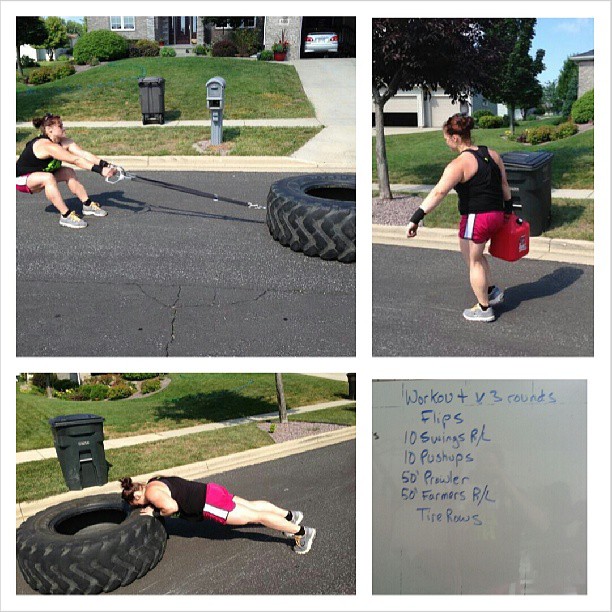
by | Oct 29, 2014 | Building Muscle, Cardio, Fat Loss / Cutting, Motivation, Nutrition
 With the ever-increasing popularity of intense workout programs like CrossFit, metabolic conditioning, or metabolic resistance training (MRT) seems to be a fitness trend that’s here to stay.
With the ever-increasing popularity of intense workout programs like CrossFit, metabolic conditioning, or metabolic resistance training (MRT) seems to be a fitness trend that’s here to stay.
These workouts tend to be intense, impressive, and very cool-looking. Typically, they have the added benefit of giving you a goal to work towards (beat the clock!). Who doesn’t want to flip a big heavy tire, beat things with hammers, and carry around heavy weighted objects as fast as possible?
If you’ve done your part, by the end of the workout, you’re exhausted, sweating from head to toe, and sprawled out on the ground, hoping someone will bring you a protein shake (or maybe a gallon of Ben and Jerry’s…).
Obviously you’ve just had a great strength training workout, right?
Not necessarily.
What is Metabolic Resistance Training?
It can be confusing to understand exactly what this term means since this term is thrown around pretty haphazardly in the fitness world. It is not just a bunch of random exercises done as quickly as possible.
Simply put, Metabolic Resistance Training is a form of metabolic conditioning. The purpose of metabolic conditioning is to increase the efficiency of one of the three pathways used in exercise metabolism. Metabolic conditioning has the added benefit of conditioning the muscles to better use to fuel delivered to them. Ultimately, this should result in a better capacity to burn fat.

I do love pushing vehicles as a supplement to my serious strength training workouts!
Metabolic conditioning can be a great tool if your goal is fat loss. Not only does metabolic conditioning burn tons of calories during a workout, it also increases caloric burn in the 24-48 hours after your workout. This is due to excessive post-exercise oxygen consumption (EPOC). There are various different types of work to rest periods intended to increase EPOC.
A few examples are:
Tabata: 20 seconds of hard work, followed by 10 seconds of rest for 8 total rounds
30 On/30 Off: 30 seconds of hard work, followed by 30 seconds of rest for 6 total rounds
Circuits: Perform 3-6 exercises in a row with minimal to no rest between sets. These exercises should follow a logical pattern and should include elements of pushing, pulling, squatting, hinging, and carrying objects.
Energy Systems – The Goal of MRT
The primary goal of metabolic conditioning is to increase the efficiency of one of three metabolic pathways used in energy metabolism.
Creatine Phosphate Pathway: Also referred to as the Immediate Pathway, this energy system is responsible for providing short (less than 10 seconds) bursts of energy. This is the energy pathway utilized when performing quick power exercises like Olympic or powerlifting-style lifts or sprinting. It takes this energy system about three to five minutes to recover to its fullest potential.
Glycolytic Pathway: Also referred to as the Intermediate Pathway, this energy system provides the energy required for short, intense activities lasting one to four minutes. If you are completing high-intensity cardio intervals or doing multiple reps of a particular exercise, this is the pathway being utilized. It takes this energy system about 1-3 minutes to fully recover.
Aerobic Pathway: Also referred to as the Long-Duration Pathway, this metabolic pathway provides the energy required for longer-duration exercises of moderate-intensity work. This energy system can provide energy for hours of activity, since it has a limitless reserve (fat) to draw upon.
The energy system being conditioned by these workouts is largely determined on the rest period between sets. When structuring a metabolic resistance training circuit, it is important to keep the end goal in mind! The goal is NOT to throw weights around as fast as possible! These workouts should be well structured in order to maximize results.
It is important to remember that regardless of the activity performed, there is always some crossover between energy systems.

Metabolic conditioning is a fun way to get some cardio in, but nothing beats strength!
Is MRT the Same as Strength Training?
MRT typically involves weighted objects such as tires, battle ropes, farmer’s walks, sandbags, and kettlebells. These weighted objects are lifted in rapid succession, and the intensity is kept very high.
However, it is important to remember that the main goal of these workouts is not to maximize strength and to build muscle. The main goal of these workouts is to better utilize energy stored in the body. The primary goal of these workouts is more maintaining strength levels than gaining strength and adding muscle mass.
It’s key to remember that metabolic conditioning is not meant to be a haphazard, random bunch of exercises thrown together with the goal of burning a bazillion calories. These types of workouts are an advanced technique. So advanced in fact, that they are what many elite athletes turn to when they have reached their potential and are simply trying to maintain their current level of fitness. For the average recreational exerciser, it is important to complete these workouts under the supervision of a skilled trainer or strength coach.
The bottom line? You should view MRT workouts as a highly effective form of cardio, along the same lines as HIIT, meant to burn fat. These workouts are not intended to replace conventional strength training.
Is MRT right for you?
MRT can be a fantastic tool in your fat loss arsenal, provided that all other key elements are on pointe.
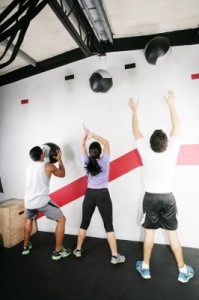 Alwyn Cosgrove, author of the best-selling series New Rules of Lifting, who has a great reputation for results-driven fitness, has come up with a Hierarchy of Fat Loss that can serve as a great checklist to go through when evaluating whether and how new training philosophies will help you reach your goals. You should think about approaching the following elements in order. As long as you are achieving the results you desire, even if progress is slow, there is no reason to add elements further down the list. Stay patient and trust the process!
Alwyn Cosgrove, author of the best-selling series New Rules of Lifting, who has a great reputation for results-driven fitness, has come up with a Hierarchy of Fat Loss that can serve as a great checklist to go through when evaluating whether and how new training philosophies will help you reach your goals. You should think about approaching the following elements in order. As long as you are achieving the results you desire, even if progress is slow, there is no reason to add elements further down the list. Stay patient and trust the process!
1. Nutrition If your ultimate goal is to lose fat and increase lean muscle mass, start with nutrition. Keep it simple, and don’t overthink things. Your first step is to make sure that you are eating enough calories to support a healthy metabolism and maintain your lean muscle mass while you are losing fat. The more muscle you have, the higher your metabolism, so don’t sacrifice your lean mass for a smaller number on the scale! After you have made sure that you are taking in a sufficient amount of calories, look at your protein. A great goal is to take in approximately 1 gram of protein per pound of body weight. Take in plenty of healthy fats, and round everything out with some carbohydrates.
2. Nutrition Yes, it’s that important! Until you get your nutrition on pointe, there’s no point in prioritizing anything else! Activities that burn calories, maintain and promote muscle mass, and elevate metabolism Our metabolism is largely determined by our resting metabolic rate (RMR). RMR largely depends on how much metabolically active tissue (AKA muscle!!!) you have. Therefore, activities that increase RMR by maintaining or gaining muscle mass should be of next importance. A solid, periodized strength training program utilizing heavy weights with well-managed rest periods will accomplish this goal. Your strength training program should include plenty of compound movements like the squat, pull, push, lunge and hinge. Depending on your split, you should be lifting heavy weights 2-4 times per week. Bonus points here if your strength training program uses percentages of 1RM to determine your training loads! Circuit training, high-rep, low weight workouts, and metabolic conditioning do not fall into this category. Some of our favorite recommendations for a solid strength training program include STS, Stronglifts, and New Rules of Lifting for Women.
3. Adding in activities that burn calories and elevate metabolism. This is where activities falling under the realm of metabolic conditioning come in. Metabolic resistance training, HIIT, circuit training, and tabata training are powerful fat loss tools. They are far superior for producing results than traditional, steady-state cardio. If you have your nutrition on pointe, are killing your strength training workouts, and not seeing the results you desire, you may wish to experiment by adding in 1-2 short metabolic conditioning workouts each week. These are meant to supplement, NOT replace your strength training program. These workouts are very taxing and intense, and you may find that by adding them in, your appetite goes soaring through the roof! Make sure that you are continuing to fuel these workouts and getting plenty of recovery time. Adding a short metabolic finisher to the end of your workout might be a better option if you are new to this type of training or are short on time.
4. Activities that burn calories but don’t necessarily maintain muscle or elevate metabolism. If you still have additional time to devote to your training, you might consider adding in a steady-state cardio workout. These workouts will burn calories, but do not put you at any significant metabolic advantage. You should be aware that these types of activities can work against you if your goal is to build or even maintain your current muscle mass. Therefore, steady state cardio should be included as a last resort, only if you are making sure that these activities do not put you in too large of a caloric deficit, and only if you truly enjoy these types of activities.
 Becca is a busy wife and homeschooling mother to five children ages 5 to 13. About three years ago, she embarked on a journey to health and fitness that resulted in the loss of approximately 100 pounds. Today, she is a competitive powerlifter and strongwoman who loves ice cream and deadlifts. As an ISSA certified personal trainer, she is passionate about helping women to get started on a lifestyle of strength and fitness.
Becca is a busy wife and homeschooling mother to five children ages 5 to 13. About three years ago, she embarked on a journey to health and fitness that resulted in the loss of approximately 100 pounds. Today, she is a competitive powerlifter and strongwoman who loves ice cream and deadlifts. As an ISSA certified personal trainer, she is passionate about helping women to get started on a lifestyle of strength and fitness.
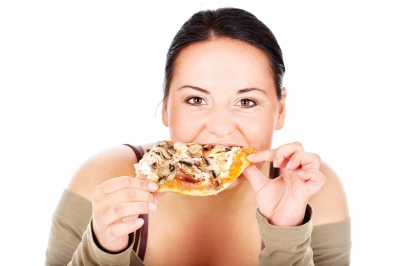
by | Oct 27, 2014 | Fat Loss / Cutting, Nutrition
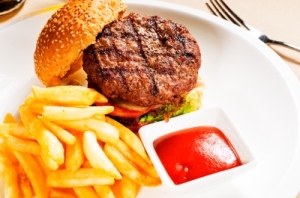 In the past when we thought of fast foods restaurants — like McDonald’s or Burger King — a picture of greasy fries, burgers, and sugary sodas came to mind. We imagined a line of cars at the drive-thru waiting patiently to receive grease stained bags, passed through the window from a lady with a headset. Nowadays we see commercials of a gorgeous skinny girl holding a burger that’s bigger than her head, piled with beef, cheese, onions, bacon, lettuce, bacon, tomatoes and more bacon that she barely takes a bite of. I’m usually thinking, “ugh what a waste of good protein!” (And, how come those burgers never look like that in real life?! Hmm?) Yes, I’ve had one of those burgers, and it tasted pretty good! Then afterward…I checked the restaurant’s website for the nutritional content, and discovered I ate half of my calories in one meal. (Thank goodness I eat more than 1200 calories…but that’s a completely different blog!)
In the past when we thought of fast foods restaurants — like McDonald’s or Burger King — a picture of greasy fries, burgers, and sugary sodas came to mind. We imagined a line of cars at the drive-thru waiting patiently to receive grease stained bags, passed through the window from a lady with a headset. Nowadays we see commercials of a gorgeous skinny girl holding a burger that’s bigger than her head, piled with beef, cheese, onions, bacon, lettuce, bacon, tomatoes and more bacon that she barely takes a bite of. I’m usually thinking, “ugh what a waste of good protein!” (And, how come those burgers never look like that in real life?! Hmm?) Yes, I’ve had one of those burgers, and it tasted pretty good! Then afterward…I checked the restaurant’s website for the nutritional content, and discovered I ate half of my calories in one meal. (Thank goodness I eat more than 1200 calories…but that’s a completely different blog!)
Although this burger may be OK every so often, we know that we should not eat like this every day, yet we don’t always have the time to cook up a healthy meal. If cooking a meal doesn’t fit into your schedule on some occasions, there are some healthy alternatives that most fast food restaurants including McDonald’s, Burger King, and Wendy’s now offer. You just have to do your homework and know what you are going to order before you get there. 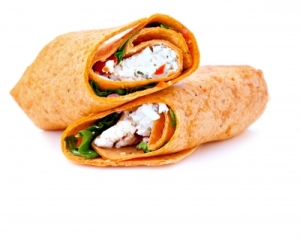
Quiz time! So of these two meals from McDonald’s, which would you order if you are watching your macros, but also wanting a healthy protein packed meal; a small regular cheese burger with an order of small fries or a grilled McWrap with chicken and bacon with and order of small fries? If you picked the grilled chicken and bacon McWrap, you would have picked the one with the higher calorie and fat content. The cheeseburger and fries are 520 calories, 22g of fat, 17g of protein and the wrap is 710 calories, 30g of fat but it has 38g of protein. So if you could remove the mayonnaise from the wrap and replace it with mustard you may have a winner! On the small burger if you remove the cheese you will do even better. But, who wants a cheeseburger without cheese? Not me.
So, if you’re counting calories and your macronutrients, just be careful of the condiments and toppings that you add to your sandwiches. Most restaurants will make the sandwich your way with the condiments you want. Just remember to check it out before you leave to ensure it has been prepared correctly. At sandwich or sub shops like Subway or Jimmy John’s, it’s basically the same scenario that condiments will make the difference. Mayonnaise and cheese aren’t bad, you just have to fit them into your calorie and macronutrient budget.

I recently found out that a very popular Cajun fried chicken restaurant called Popeye’s has blackened chicken tenders. I tried them and they were very tasty. For 3 it was 170 calories and 2 grams of fat and 26g of protein. The same breaded and fried were 310 calories, 15g of fat and 28g of protein. Now if you are also monitoring your sodium and cholesterol, you must take that into account with ALL fast foods. Most are ridiculously high in both. Google foods and check that nutrition information as they may push you above your intake goal.
Many people like to choose salads at fast food restaurants thinking this is the best choice. Did you know that you could take a perfectly healthy salad and add a lot of calories and fat to it by over doing it with dressings, croutons and cheeses? Ingredients that are not being weighed or measured as you’re adding them to your plate, typically have calories that add up fast. In the end, you would have been better off getting the grilled chicken with veggies, mustard and fries.
If fast food restaurants aren’t for you, there are plenty of grocery stores that now have hot delicatessens where they prepare grilled chicken with fairly healthy side dishes like green beans, mixed vegetables and mashed potatoes. (Yes, don’t forget the carbohydrates) All you do is take it home, light some candles, and you have an “almost” home cooked meal.
Of course, the best option is to plan and have great home cooked meal, but we all know life happens and you might not be able to do this sometimes. Just remember, there are plenty of delicious alternatives that you can choose from when you’re in a pinch. With all the different options and choices most fast food restaurants are offering, you will never have to skip a meal or settle for an unhealthy substitute, unless you want to.
Nutritional information for popular fast-food restaurants:
McDonald’s
Popeye’s
Burger King
Wendy’s
Chick-fil-a
Photo credit:
Serge Bertasius Photography
KEKO64

by Trish Adams | Oct 17, 2014 | Building Muscle, Fat Loss / Cutting, Nutrition

The more muscle we have, the more calories we burn throughout the day!
If you’ve been an EM2WL follower for a while you know that we talk about protein – a lot. The truth of the matter is, whether you’re trying to get big or get small, protein plays a very important role in your diet. The cells in our bodies need protein to function and without it, our cells and organs, muscles, connective tissue, and bones simply would not hold together.
Fad diets will be with us as long as there is money to be made from people wanting to gain or lose weight, however, if you understand the role each macronutrient plays in your body and why all are important, you will be less likely to fall victim to the nonsense. Let’s focus on the importance of protein and why we need it in our diet and how it plays a role in fat loss.
First it’s important to understand what protein is. Protein is a macronutrient, meaning it is a nutrient needed in large amounts by the cells in our body in order to function and survive. Protein is composed of amino-acids, the building blocks of life. When protein is consumed, our bodies use these amino acids to build and maintain lean muscle mass.
When we strength train, our muscles experience microscopic tears. Through rest and recovery, these tears are healed, allowing our muscle cells to grow back bigger and stronger after each workout. Protein is key in this muscle repair process, as it works to rebuild those torn muscle fibers. Therefore it is necessary to have an adequate protein intake when trying to increase muscle mass or size. The more lean muscle mass we have, the more calories we burn throughout the day which also aids our fat loss efforts. Win, win!
Another way that protein is fat-loss friendly is that your body uses a lot of energy (i.e. calories) just to metabolize it due to its complex structure. This is known as the thermic effect and for protein it can be as high as 30% of the calories in the protein! Because this process takes a while, protein also stays in your body longer than other macronutrients like carbs, for example. This means that we will feel fuller, longer when we eat protein. Bonus? We’re less likely to overeat when our body is satiated!
One of the challenges with consuming sufficient protein, however, is that it is not as convenient as the other macronutrients, fats and carbs. While it’s easy to grab a granola bar or piece of fruit, portable protein sources are definitely more limited in comparison and you’re much less likely to toss chicken or fish in your purse. As a result, people tend to eat less protein than they should, however, there are ways you can increase your protein intake that are quite simple.
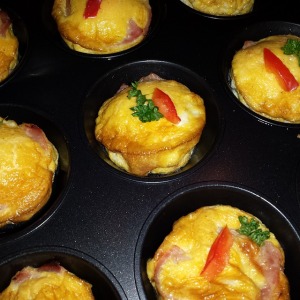 First, move beyond the idea that you can only get protein from meats. Of course, a 4 oz serving of meat a few times a day will certainly put you on the right track, but let’s look at some other ways you can incorporate protein into your diet.
First, move beyond the idea that you can only get protein from meats. Of course, a 4 oz serving of meat a few times a day will certainly put you on the right track, but let’s look at some other ways you can incorporate protein into your diet.
Befriend Protein Powder Protein powder’s convenience and low cost per serving makes it a great option to consider. You can add 1-2 scoops to your baked goods recipes or pancakes and oatmeal. Toss a scoop into your shakes. Nowadays, there are also so many flavors of protein powder to choose from so keep a variety on hand so you don’t get bored.
Eat Eggs If you’re big on salads, chop up a hardboiled egg on top for a protein punch. Hard boil a dozen for the week ahead of time and pack them for work to have as a mid-day snack. Another great option is an egg bake like a quiche or frittata. When made with cheese you’ll get even more protein per serving.
Go Nuts Start eating nuts and seeds like hemp, chia or sunflower. Nut butter spread on your favorite fruits or a stalk of celery makes a great snack.
Do Dairy Choose low or no fat versions of milk and yogurts. Non-dairy milks, such as soy, have a higher protein content than regular milk per serving. Cottage cheese and reduced fat cheeses are also a good source of protein.
Protein Snacks One of my favorite portable protein snacks is jerky. It is a meat, yet super convenient to keep in the car or throw in a bag. Another option is protein bars (homemade or store-bought) that can satisfy a sweet craving while still giving you a boost of protein.
When you think about the function of protein in the body, its role in muscle repair and growth and how it can benefit your fat loss efforts, it only makes sense to make sure you’re eating enough. Keep your palate happy by mixing up your protein intake. For all the hard work you put in at the gym, be sure to put that level and quality of work into making sure you eat enough protein.

by Trish Adams | Oct 15, 2014 | Consistency, Intuitive Eating, Nutrition
 Many of today’s popular diets share a similar characteristic where you eat from a list of approved foods or food types and when you choose not to, you are cheating. Thankfully, it seems, a few diets are getting away from this notion of cheating such as flexible dieting and IIFYM, however, the practice of eating a cheat meal or having cheat days is still widely followed by those restricting their diets.
Many of today’s popular diets share a similar characteristic where you eat from a list of approved foods or food types and when you choose not to, you are cheating. Thankfully, it seems, a few diets are getting away from this notion of cheating such as flexible dieting and IIFYM, however, the practice of eating a cheat meal or having cheat days is still widely followed by those restricting their diets.
If what you eat on the weekend is drastically different from what you eat during the week, you are doing it wrong.
As you know, EM2WL does not endorse any specific diet, but we do make the following basic recommendations:
• Eat sufficient protein
• Eat sufficient fiber
• Eat enough food to meet your level activity
Pretty basic stuff, right? Nothing too scary and probably something most people can get with. Sure, there is more to it like balancing macros, whole vs processed foods, nutrient timing, staying hydrated, etc. but at a basic level, this is what it looks like.
My gripe with having a cheat meal has ZERO to do with the quality of the meal itself, but how the meal is labeled and the potential backlash it can have. The problem with labeling foods as cheats is that we are dangerously close to being right back at the good vs bad food mindset. As we’ve seen in the past, this often leads to putting foods on a restricted list, which can introduce binge eating and other forms of disordered eating.
Cheat: to practice fraud or trickery – Merriam Webster
 Think about this – When has cheating ever been associated with something positive? Cheat on a test? Bad. Cheat on your spouse? Bad. Cheating death? Ok, that is a good one, but even that seemingly good cheat has an ominous feel to it, like the grim reaper might be lurking around every corner to settle the debt.
Think about this – When has cheating ever been associated with something positive? Cheat on a test? Bad. Cheat on your spouse? Bad. Cheating death? Ok, that is a good one, but even that seemingly good cheat has an ominous feel to it, like the grim reaper might be lurking around every corner to settle the debt.
Labeling a meal as cheating implies some form of deceit and has negative overtones. I am a big believer that framing things positively impacts how you feel about it. Are you really “getting away with” eating a cookie, enjoying some pasta or anything that is not on the sanctioned food list? If so, maybe your diet is too restrictive. The reality is that you are just eating food. Period. There are no food police or other authority that you need to outwit or who is waiting to lock you up.
Food is food. Every food has a nutritional profile and you should gauge its value for YOUR diet and then make a determination if it is something that you want to eat often or in moderation. In general, eating foods that are more nutritionally dense AND that you enjoy is a good idea. Sprinkle in the foods that don’t offer as much nutritional value, but you simply enjoy eating. Maybe for you that is a 50/50 balance or an 80/20 balance. Whatever that balance is, it is your call to make, but avoid labeling foods in such a way that it may potentially trigger some guilt about eating it afterward.

by Trish Adams | Sep 22, 2014 | Consistency, Nutrition
 The fall foliage will soon transform leaves to beautiful colors from vibrant yellows to brilliant reds. Favorite fall sweaters and boots are making a reappearance. Parents are doing the fall-sports-hustle, shuttling kids to and fro for their various activities. Before long, the holiday season will be in full swing and with it the usual family-gatherings and seasonal baked goods. As we say good bye to bathing suits in favor of cozy knit sweaters, it’s easy to fall into a comfort level with ourselves. Don’t allow the seasons to dictate the level of commitment you make to being and living healthy.
The fall foliage will soon transform leaves to beautiful colors from vibrant yellows to brilliant reds. Favorite fall sweaters and boots are making a reappearance. Parents are doing the fall-sports-hustle, shuttling kids to and fro for their various activities. Before long, the holiday season will be in full swing and with it the usual family-gatherings and seasonal baked goods. As we say good bye to bathing suits in favor of cozy knit sweaters, it’s easy to fall into a comfort level with ourselves. Don’t allow the seasons to dictate the level of commitment you make to being and living healthy.
Maintaining Consistency
By maintaining good healthy habits year round, you won’t have to scramble come spring to drop unwanted inches or pounds in anticipation of bathing suit season. While many of us will be bulking (with which weight gain is expected), don’t let that be an excuse to over indulge. Maintaining healthy habits year-round is the best thing to do for consistency (and your body will thank you for it!). So what are some things you can do to stay on track even as the temperature takes a dip and the clothes pile on?
 Find an indoor exercise you love
Find an indoor exercise you love
If outdoor exercise is your thing, you probably already work around the weather from time-to-time. However, when the temp dips for an extended period, having an alternative plan or program is a must. Consider exercise DVDs or online training for more options. The idea here is to banish your excuses before they have a chance to come up!
Have a backup plan
Sometimes Mother Nature wins. No matter how on-top-of-it your city is, snow and ice can result in street and gym closures. String a few big storms together and your training can be sidelined for days or weeks. Have a backup plan in case this happens to keep your training on track. Perhaps you can purchase equipment for home or have access to a nearby friend’s home gym. Get creative!
Stock up on fruits and veggies
While this is a good rule of thumb any time of year, it is most important during months when the sweets are EVERYWHERE. Take full advantage of the season’s bounty and keep washed fruits and cut up vegetables easily accessible. This makes them more appealing and convenient to eat. Next time you reach for a just-baked sugar cookie, perhaps you can satisfy your sweet craving with a flavorful fruit instead.
 Seasonal happenings are certainly something special and cause for celebration. Fall flavored coffees, apple crisps and even pumpkin flavored beer are out and Mother Nature is preparing for winter. As with all seasons, enjoy the things you love in moderation and stick with the fitness habits you have worked hard to establish. Don’t fall victim to the cold weather slow down only to be in a frenzy during the spring thaw.
Seasonal happenings are certainly something special and cause for celebration. Fall flavored coffees, apple crisps and even pumpkin flavored beer are out and Mother Nature is preparing for winter. As with all seasons, enjoy the things you love in moderation and stick with the fitness habits you have worked hard to establish. Don’t fall victim to the cold weather slow down only to be in a frenzy during the spring thaw.
Prepare to succeed and succeed you will!

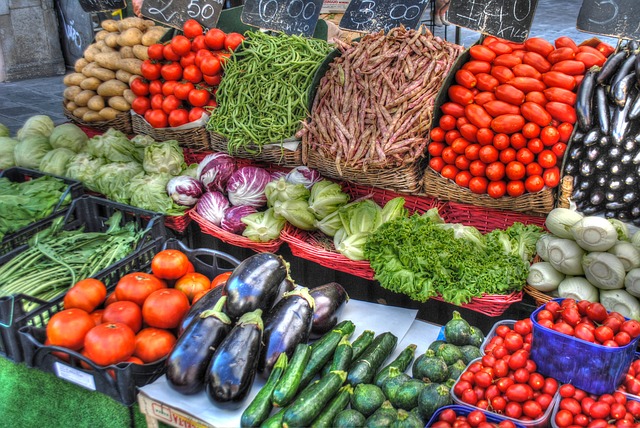
by Trish Adams | Sep 9, 2014 | Nutrition
 There are many reasons you might want to make changes to your diet. You might want to overcome a health problem, improve body composition or just increase the amount of nutrients you’re eating each day. Figuring out where to start can often be a stumbling block. Should you do a complete kitchen overhaul and wipeout the pantry? Should you swear off fast food and cook every meal?
There are many reasons you might want to make changes to your diet. You might want to overcome a health problem, improve body composition or just increase the amount of nutrients you’re eating each day. Figuring out where to start can often be a stumbling block. Should you do a complete kitchen overhaul and wipeout the pantry? Should you swear off fast food and cook every meal?
Before overwhelming yourself with too many questions, you first need to determine where you are in order to know what you need to do next. Determining your readiness for change can help you determine your path.
I like what I eat. I don’t want to change.
Sometimes we know that making changes to our diet, like eating sufficient fiber everyday, might be something that’s good for us. You might want to lose weight or change your physique in some other way, but you don’t really want to make the changes to your diet that will help you to reach your goal. If this sounds like you, you’re in the “pre-contemplation” stage, which just means that you’re not yet ready to make changes in your eating.
What you should do Jumping into changes right now is probably not the best idea. Rather, focus on getting your mind used to the idea of making a change first. Likewise, to get better prepared, consider educating yourself about food, the role nutrients play in your body or what changes might help get you closer to your goal.
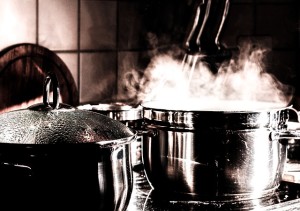 Change? I’m still thinking about it.
Change? I’m still thinking about it.
If you find yourself giving some serious thought to making diet changes, but you haven’t pulled the trigger, you’re in the “contemplation” stage. In this stage you see the value in the change, but you may not know how to go about implementing it.
What you should do Start by identifying anything that might be standing in the way of you implementing diet changes. Write down these limiting factors and, for each obstacle, list a solution. Set a goal for yourself on how you will overcome each item listed. Perhaps you want to include protein smoothies, but don’t own a blender or you want to eat more homemade meals, but don’t think you have the time. A solution might be to cook and freeze meals or set your slow cooker before work. Remember to be specific with your solutions.
I’m ready for diet change. Let’s do this!
Finding solutions to your limiting factors is a good sign that you are ready to move forward with your diet changes. In the “preparation” stage, you know what you need to do to make changes and you’re ready to put a plan in place to make it happen!
What you should do Having a detailed plan will help you stay focused when you’re preparing for diet changes. Start by identifying the dietary habits that you want to adopt. For each habit decide if it is realistic or if it needs to be broken down into a smaller habit. Remember, doing a diet overhaul is not a good place to start. Instead, focus on just one or two small, but powerful habits to implement at a time.
Write down your plan, noting what action you will take each day. If you want to increase the protein in your diet, you might start by identifying a protein to include each day at breakfast. Perhaps you’ll eat yogurt, eggs, cheese or a protein shake? Remember to be specific!
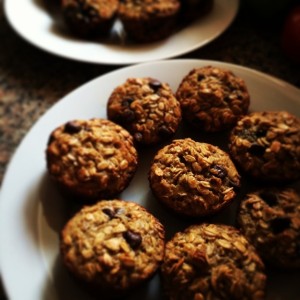 Changes that last
Changes that last
Making changes to your diet can be challenging, but it is most certainly doable. Give yourself time to adopt each new habit and always congratulate yourself for any improvement you make, no matter how small. Regardless of which stage you are starting at, there’s always a way to take it to the next level.
Rather than rushing into something that will overwhelm you, figure out where you are right now and put yourself on a path to success, moving through each phase as you’re ready. By allowing yourself the time and patience that big changes need, you’ll be healthier, more fit and ultimately with changes that last.

 With the ever-increasing popularity of intense workout programs like CrossFit, metabolic conditioning, or metabolic resistance training (MRT) seems to be a fitness trend that’s here to stay.
With the ever-increasing popularity of intense workout programs like CrossFit, metabolic conditioning, or metabolic resistance training (MRT) seems to be a fitness trend that’s here to stay. Alwyn Cosgrove, author of the best-selling series New Rules of Lifting, who has a great reputation for results-driven fitness, has come up with a Hierarchy of Fat Loss that can serve as a great checklist to go through when evaluating whether and how new training philosophies will help you reach your goals. You should think about approaching the following elements in order. As long as you are achieving the results you desire, even if progress is slow, there is no reason to add elements further down the list. Stay patient and trust the process!
Alwyn Cosgrove, author of the best-selling series New Rules of Lifting, who has a great reputation for results-driven fitness, has come up with a Hierarchy of Fat Loss that can serve as a great checklist to go through when evaluating whether and how new training philosophies will help you reach your goals. You should think about approaching the following elements in order. As long as you are achieving the results you desire, even if progress is slow, there is no reason to add elements further down the list. Stay patient and trust the process! Becca is a busy wife and homeschooling mother to five children ages 5 to 13. About three years ago, she embarked on a journey to health and fitness that resulted in the loss of approximately 100 pounds. Today, she is a competitive powerlifter and strongwoman who loves ice cream and deadlifts. As an ISSA certified personal trainer, she is passionate about helping women to get started on a lifestyle of strength and fitness.
Becca is a busy wife and homeschooling mother to five children ages 5 to 13. About three years ago, she embarked on a journey to health and fitness that resulted in the loss of approximately 100 pounds. Today, she is a competitive powerlifter and strongwoman who loves ice cream and deadlifts. As an ISSA certified personal trainer, she is passionate about helping women to get started on a lifestyle of strength and fitness.



 In the past when we thought of fast foods restaurants — like McDonald’s or Burger King — a picture of greasy fries, burgers, and sugary sodas came to mind. We imagined a line of cars at the drive-thru waiting patiently to receive grease stained bags, passed through the window from a lady with a headset. Nowadays we see commercials of a gorgeous skinny girl holding a burger that’s bigger than her head, piled with beef, cheese, onions, bacon, lettuce, bacon, tomatoes and more bacon that she barely takes a bite of. I’m usually thinking, “ugh what a waste of good protein!” (And, how come those burgers never look like that in real life?! Hmm?) Yes, I’ve had one of those burgers, and it tasted pretty good! Then afterward…I checked the restaurant’s website for the nutritional content, and discovered I ate half of my calories in one meal. (Thank goodness I eat more than 1200 calories…but that’s a completely different blog!)
In the past when we thought of fast foods restaurants — like McDonald’s or Burger King — a picture of greasy fries, burgers, and sugary sodas came to mind. We imagined a line of cars at the drive-thru waiting patiently to receive grease stained bags, passed through the window from a lady with a headset. Nowadays we see commercials of a gorgeous skinny girl holding a burger that’s bigger than her head, piled with beef, cheese, onions, bacon, lettuce, bacon, tomatoes and more bacon that she barely takes a bite of. I’m usually thinking, “ugh what a waste of good protein!” (And, how come those burgers never look like that in real life?! Hmm?) Yes, I’ve had one of those burgers, and it tasted pretty good! Then afterward…I checked the restaurant’s website for the nutritional content, and discovered I ate half of my calories in one meal. (Thank goodness I eat more than 1200 calories…but that’s a completely different blog!)








 The fall foliage will soon transform leaves to beautiful colors from vibrant yellows to brilliant reds. Favorite fall sweaters and boots are making a reappearance. Parents are doing the fall-sports-hustle, shuttling kids to and fro for their various activities. Before long, the holiday season will be in full swing and with it the usual family-gatherings and seasonal baked goods. As we say good bye to bathing suits in favor of cozy knit sweaters, it’s easy to fall into a comfort level with ourselves. Don’t allow the seasons to dictate the level of commitment you make to being and living healthy.
The fall foliage will soon transform leaves to beautiful colors from vibrant yellows to brilliant reds. Favorite fall sweaters and boots are making a reappearance. Parents are doing the fall-sports-hustle, shuttling kids to and fro for their various activities. Before long, the holiday season will be in full swing and with it the usual family-gatherings and seasonal baked goods. As we say good bye to bathing suits in favor of cozy knit sweaters, it’s easy to fall into a comfort level with ourselves. Don’t allow the seasons to dictate the level of commitment you make to being and living healthy. Find an indoor exercise you love
Find an indoor exercise you love Seasonal happenings are certainly something special and cause for celebration. Fall flavored coffees, apple crisps and even pumpkin flavored beer are out and Mother Nature is preparing for winter. As with all seasons, enjoy the things you love in moderation and stick with the fitness habits you have worked hard to establish. Don’t fall victim to the cold weather slow down only to be in a frenzy during the spring thaw.
Seasonal happenings are certainly something special and cause for celebration. Fall flavored coffees, apple crisps and even pumpkin flavored beer are out and Mother Nature is preparing for winter. As with all seasons, enjoy the things you love in moderation and stick with the fitness habits you have worked hard to establish. Don’t fall victim to the cold weather slow down only to be in a frenzy during the spring thaw.




Recent Comments